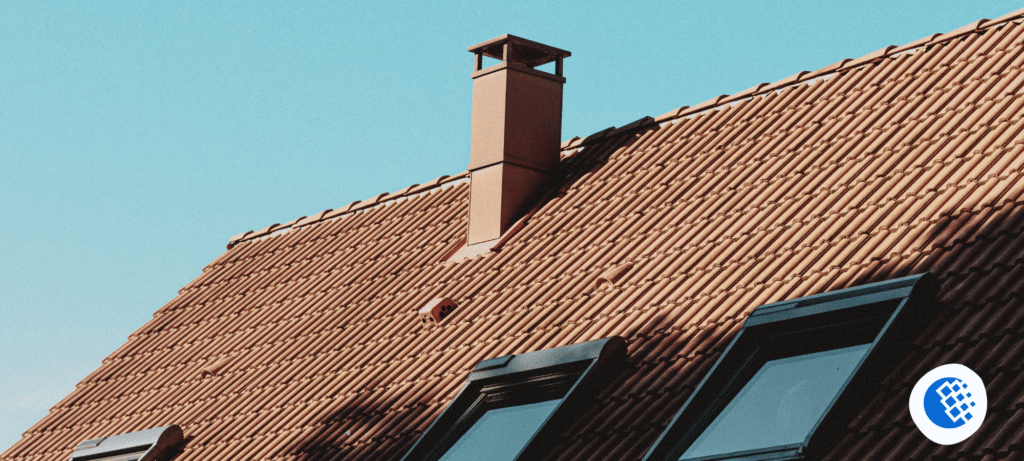Slate roofing has been a hallmark of architectural excellence for centuries, adorning some of the world’s most prestigious buildings with its timeless beauty and unmatched durability. When homeowners invest in a slate tile roof, they’re not just choosing a roofing material, they’re making a statement about quality, longevity, and aesthetic appeal. However, like all premium materials, slate requires specialized knowledge for proper maintenance and slate roof repair. Understanding the intricacies of working with this natural stone material is essential for preserving its integrity and maximizing its impressive lifespan of 75 to 200 years.
Slate as a Roofing Material
Slate is a fine-grained metamorphic rock formed from sedimentary rock through intense heat and pressure over millions of years. This geological process creates a material with exceptional properties that make it ideal for roofing applications. Natural slate possesses remarkable water resistance, fire resistance, and structural integrity that synthetic alternatives struggle to match.
The density and composition of slate vary depending on its geological origin, with Welsh slate, Vermont slate, and Virginia slate being among the most prized varieties in North America. Each type offers unique characteristics in terms of color, texture, and weathering properties. Welsh slate, for instance, is renowned for its deep blue-gray color and exceptional durability, while Vermont slate offers a wider range of colors including green, purple, and gray variations.
The Advantages of Slate Tile Roof Systems
A slate tile roof offers numerous advantages that justify its premium cost. The most compelling benefit is longevity, a properly installed slate roof can last well over a century with appropriate maintenance. This longevity translates to exceptional value over time, as homeowners may never need a complete roof replacement during their lifetime.
Beyond durability, slate provides superior weather resistance. Its dense composition makes it virtually impervious to water penetration, and its natural composition resists damage from UV radiation, acid rain, and extreme temperature fluctuations. Additionally, slate is naturally fire-resistant, providing an extra layer of safety for homes in fire-prone areas.
The aesthetic appeal of slate cannot be overstated. Its natural variations in color and texture create a sophisticated appearance that enhances property value. Unlike manufactured roofing materials that can look uniform and artificial, slate’s natural characteristics ensure that no two installations are identical, creating a unique and distinguished appearance.
Common Slate Roof Issues Requiring Professional Attention
Despite its durability, slate roofing can develop issues that require professional slate roof repair services. Understanding these common problems helps homeowners identify when professional intervention is necessary.
Broken or cracked tiles are among the most frequent issues. While slate is incredibly durable, it can crack due to impact from falling branches, severe weather, or thermal expansion and contraction. Individual slate tiles can also become loose due to nail failure or deterioration of the fastening system.
Flashing problems represent another common concern. The metal flashing around chimneys, valleys, and roof penetrations often deteriorates before the slate itself, leading to water infiltration. Professional contractors like HF Roofing understand the critical importance of maintaining proper flashing systems to protect the underlying structure.
Snow guards may also require attention over time. These devices prevent dangerous snow slides but can become loose or damaged, requiring professional reinstallation to maintain roof safety and functionality.
The Complexity of Slate Roof Installation
Slate roof installation is a highly specialized process that requires extensive experience and proper equipment. Unlike standard asphalt shingle installation, working with slate demands specific techniques to prevent damage to the brittle material.
The installation process begins with structural assessment, as slate is significantly heavier than most roofing materials. A typical slate roof weighs between 800 to 1,500 pounds per square (100 square feet), requiring adequate structural support. Professional contractors must evaluate the existing roof structure and may recommend reinforcement before proceeding with installation.
Proper underlayment installation is crucial for slate roofing systems. High-quality synthetic underlayment or ice and water shield must be installed to provide a secondary barrier against water infiltration. The underlayment must be carefully selected to complement the slate’s longevity, using standard felt paper under a 100-year slate roof would be counterproductive.
The actual slate installation requires specialized tools and techniques. Each slate must be properly sized, drilled, and fastened using appropriate copper or stainless steel nails. The overlap pattern, gauge (exposure), and head lap must be precisely calculated based on the roof pitch and local climate conditions.
Professional Slate Roof Repair Techniques
Effective slate roof repair requires specialized knowledge of slate properties and traditional installation methods. Professional contractors employ various techniques depending on the nature and extent of damage.
For isolated broken tiles, the “ripper” technique allows contractors to remove damaged slates without disturbing surrounding tiles. This specialized tool slides under the damaged slate to cut the nails, allowing for removal and replacement. The new slate is then secured using a copper hook or clip system that doesn’t require nails through the visible portion of the slate.
When multiple tiles require replacement, contractors may need to work systematically to maintain the roof’s weather resistance throughout the repair process. This often involves temporary weatherproofing measures and careful sequencing of tile removal and replacement.
Structural repairs may be necessary when roof damage extends beyond the slate tiles themselves. This can include repairing or replacing damaged sheathing, addressing structural beam issues, or upgrading inadequate support systems.
Maintenance Best Practices for Slate Roofing
Proper maintenance is essential for maximizing the lifespan of slate roofing systems. Regular professional inspections should be conducted at least annually, with additional inspections following severe weather events.
Gutters and downspouts require particular attention with slate roofs. The weight and durability of slate mean that gutter systems must be robust and well-maintained to handle the runoff from the dense material. Clogged gutters can lead to ice damming and water backup that may compromise even the best slate installation.
Tree management around slate roofs is crucial. While slate can withstand significant impact, falling branches can still cause damage. Regular tree trimming and removal of overhanging branches help prevent unnecessary damage to the slate tiles.
Professional cleaning should be performed when necessary, but homeowners should never attempt to pressure wash slate roofs. The high pressure can damage the slate surface and force water under the tiles, leading to leaks and structural damage.
Choosing the Right Contractor for Slate Work
Selecting a qualified contractor for slate roof repair or installation is crucial for protecting this significant investment. Not all roofing contractors have the specialized knowledge and experience necessary for working with slate.
Look for contractors with demonstrable experience in slate roofing, proper licensing and insurance, and positive references from previous slate projects. Companies like HF Roofing specialize in slate roofing systems and understand the unique requirements of this premium material.
The contractor should be able to provide detailed information about slate varieties, installation techniques, and maintenance requirements. They should also carry appropriate insurance coverage, as slate work involves higher risks and costs than standard roofing projects.
Conclusion
Slate roofing represents the pinnacle of roofing materials, combining unmatched durability with timeless aesthetic appeal. While the initial investment is substantial, the longevity and performance of slate make it an economically sound choice for discerning homeowners.
Whether considering slate roof installation for a new construction project or requiring slate roof repair services for an existing system, working with experienced professionals is essential. The complexity of slate work, from structural considerations to specialized installation techniques, requires contractors who understand the unique properties and requirements of this exceptional material.
With proper installation, maintenance, and professional care when repairs are needed, a slate roof can provide generations of reliable protection while maintaining its distinctive beauty. The investment in quality slate roofing, combined with professional installation and maintenance services, ensures that this traditional roofing material continues to perform at its best for decades to come.





